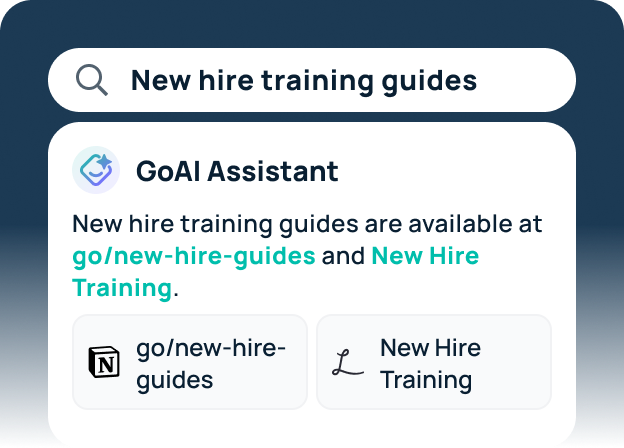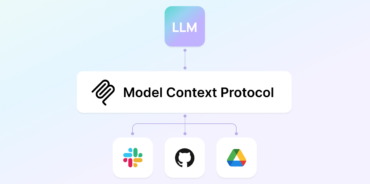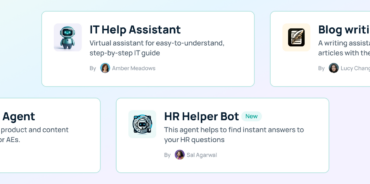With all the new AI technologies, companies now have an easier way to streamline the insight generation process.
Employees can use AI to make sense of complex data sets faster and more efficiently than ever before.
In this article, we will explore what enterprise insight generation is, how AI can drive this process, and how modern tools can uncover hidden insights.
What is enterprise insight generation?
Enterprise insight generation is the process of turning raw data into meaningful and actionable information that businesses can use to make informed decisions.
Companies accumulate data from various sources like customer interactions, market trends, internal processes, and operational metrics. Without the right tools, this data often sits unused or requires extensive manual analysis to generate insights.
AI-powered tools have revolutionized this process, automating the analysis of large data sets and delivering actionable insights in real time. AI can digest big data and produce insights that would be hard, if not impossible, for humans to uncover on their own.
Benefits of AI-driven insight generation
AI’s ability to process big data and generate insights in real time offers several benefits for enterprise leaders:
- Speed: AI can process large volumes of data from different sources far more quickly than humans, delivering insights within minutes rather than days or weeks.
- Accuracy: AI reduces human error by automating data analysis, leading to more precise insights.
- Actionable insights: The ability to view insights in an easy-to-understand format (e.g., insight cards) allows decision-makers to take immediate, informed action.
- Scalability: AI tools can handle increasing amounts of data without slowing down, making them invaluable as businesses scale.
The insight generation process with AI
The insight generation process using AI generally involves several steps:
- Data collection: AI-powered tools gather data from various systems, including CRM, ERP, customer feedback, social media, and other enterprise applications.
- Data analysis: AI uses algorithms to detect patterns, trends, and correlations across data sets, which would otherwise go unnoticed.
- Insight generation: Once patterns are identified, the AI insight generator produces summaries, forecasts, or recommendations.
- Actionable output: Insights are presented in an easy-to-digest format, allowing enterprise leaders to make data-driven decisions quickly.

Top AI insight generation tools
These tools streamline the insight generation process, enabling enterprise leaders to make informed, data-driven decisions faster than ever.
1. GoSearch
GoSearch is an advanced enterprise search and insight generation tool that integrates with your workplace apps to provide AI-driven summaries and insights from scattered data sources.
By connecting to platforms like email, CRM systems, and communication apps, GoSearch helps employees quickly generate insights that would otherwise take hours or even days of manual analysis.
Key features:
- Integrates with 100+ business apps
- Uses natural language processing (NLP) to analyze unstructured data
- Provides actionable insights through easy-to-understand summaries
- Real-time data analysis and reporting
- Helps identify trends and patterns that would be hard to spot manually

AI-powered enterprise search tools can generate actionable insights from workplace apps for each department. Here are some examples:
- HR: Identify teams at risk of high turnover by analyzing survey data and communication trends.
Example: “25% of marketing employees show declining engagement and reduced Slack activity, signaling potential attrition risk.”
- Sales: Detect clients at risk of non-renewal by tracking reduced email and meeting activity.
Example: “Client X’s email activity dropped 30%, and no follow-up meetings are scheduled, indicating a renewal risk.”
- Marketing: Evaluate campaign performance by comparing social media engagement and email click-through rates.
Example: “Social media engagement dropped by 15%, but email clicks from mid-market customers increased by 25%.”
- Finance: Spot budget overspending trends by analyzing invoices and spending patterns.
Example: “The IT department is projected to overspend by 10% based on Q3 budget data.”
- Customer Support: Identify common customer issues and inefficiencies by analyzing support tickets.
Example: “Tickets for Product Z increased by 35%, with onboarding challenges causing longer resolution times.”
- Operations: Detect workflow bottlenecks by analyzing task completion rates and resource allocation.
Example: “Engineering team delays have increased by 40%, suggesting the need for additional resources.”
- IT: Uncover security risks by analyzing system logs and security alerts.
Example: “Server X had 3 downtimes this month, with a 20% increase in security alerts, indicating a potential vulnerability.”
2. IBM Watson
IBM Watson is an AI platform known for its data analytics and insight generation capabilities. Watson analyzes structured and unstructured data to provide insights that drive business strategies. It excels at customer insights, making it useful for enterprises aiming to improve customer experience and optimize operations.
Key features:
- Advanced data analytics and machine learning models
- NLP for understanding unstructured data
- Industry-specific insights for sectors like finance, healthcare, and retail
- Cloud-based for scalability and flexibility
3. Microsoft Power BI
Microsoft Power BI is a business intelligence platform that integrates AI-driven insights into its data visualization capabilities. It allows enterprises to analyze their data from various sources in real time, providing insight cards and visual reports that help teams generate insights faster.
Key features:
- AI-powered data analysis and reporting
- Customizable dashboards for real-time data insights
- Integration with Microsoft 365 and other business tools
- Predictive analytics for forecasting trends and performance
4. Google Cloud AI
Google Cloud AI offers a suite of AI and machine learning tools designed to help enterprises handle and analyze big data. With its AI-driven insights, businesses can process large data sets, generate insights in real time, and make more informed decisions.
Key features:
- Scalable machine learning models and data processing
- Integration with Google Workspace and other platforms
- Pre-trained AI models for specific business use cases
- Real-time insight generation and analytics
5. Tableau
Tableau is a data visualization platform that incorporates AI features to help users generate actionable insights from their data. With its AI-powered “Explain Data” feature, Tableau allows users to explore data patterns and anomalies automatically.
Key features:
- AI-powered data explanation and visualization
- Drag-and-drop interface for easy analysis
- Real-time analytics with custom visual reports
- Integration with multiple data sources (cloud, on-premise, etc.)
Start generating insights with AI
Whether you’re looking to optimize customer experience, streamline internal operations, or uncover new market opportunities, AI-driven insight generation is key to staying ahead.
With tools like GoSearch, enterprises can finally unlock the potential hidden within their data and make smarter, faster decisions.
Search across all your apps for instant AI answers with GoSearch
Schedule a demo

















